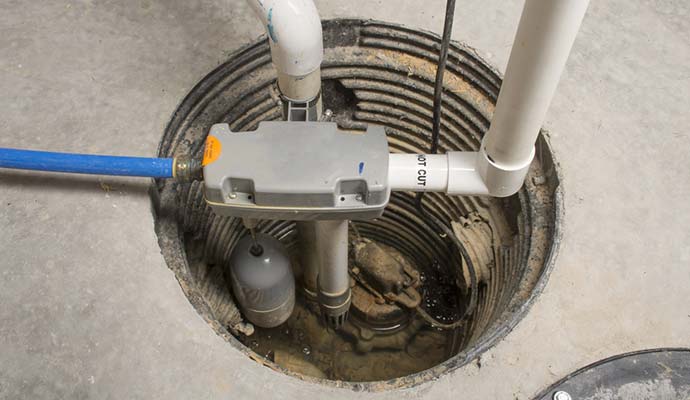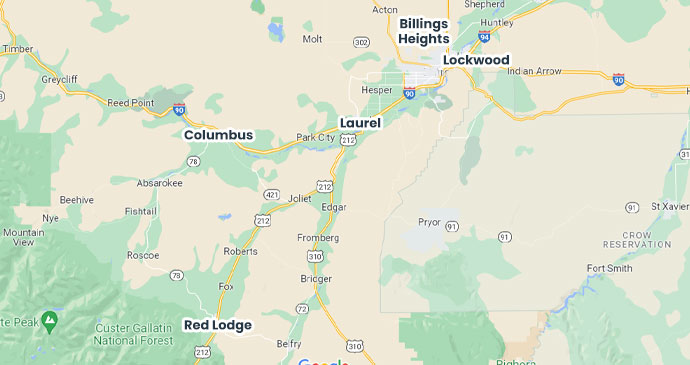"Luckily I have never needed to use a restoration company, but as someone who has worked closely with Alpha Omega, they have treated my clients very well, and have always been honest and very transparent. Although their whole team is very professional and punctual, Carissa and Sonya have been great to work with."
What Is a Sump Pump and How Does It Work?
Protecting your home or commercial building from below-ground wetness is a bigger deal than you may think. Whether you have a basement, daylight basement, or a crawl space, moisture can sneak upward through cracks in your foundation, or come from backed up sewers, broken appliances, or burst pipes. On top of the built-up pools of water, the moisture can cause mold and mildew growth, which can lead to structural damage and health problems.

Do I Need a Sump Pump?
Preventing water damage can easily be done by the installation and maintenance of a sump pump. A sump pump is a device that is installed in the lowest point of your basement or crawlspace, called a sump pit. It may have the most important job out of any appliance in your entire house or business, it prevents flooding and keeps everything dry. As moisture builds up from leaking water, the sump pump directs the water away from the building.
You might want to consider sump pump installation if your home or commercial building doesn’t already have one. The difference between having a sump pump and not having one could be massive water damage to your property.
What Type of Sump Pump Should You Choose?
If you’ve determined that you need a sump pump to prevent against water damage, the next step is to determine what kind of sump pump is right for your home or business. There are two different types of sump pumps: domestic and commercial grade sump pumps.
Should You Choose a Submersible Sump Pump?
Submersible sump pumps are the most common kinds of sump pump, usually being built into the foundation of a basement. They tend to be quieter than pedestal sump pumps, as the motor is deep in the floor. This is especially important as submersible sump pumps have higher horsepower than other sump pumps, which means this model can pump out a larger amount of water in a shorter amount of time than the pedestal sump sump.
Since the sump pump is installed below ground it also doesn’t get in the way of anything in your basement, allowing you to keep that precious storage area and clear of pipes, hoses, and other equipment. The submersible sump pump also has the ability to have a backup battery, which allows the sump pump to work even when the power is out during a storm.
The benefits of the submersible sump pump come at a cost. To install a submersible into the sump pit requires a lot of time and money. And every time there is even a small amount of damage, the cement floor needs to be broken up in order to access the pump.
Should You Choose a Pedestal Sump Pump?
If your building has a narrow or shallow sump pit, then a pedestal sump pump is the better choice for your situation. This pump comes in two pieces, a motor that sits on top of the basement floor, and a hose that feeds into the sump pit. If anything happens to this sump pump, it is easily accessible and repairable since it sits above ground. The pedestal sump pump is also less likely to break than the submersible because it is not constantly under water.
The horsepower is not as great as the submersible, so in the event of large amounts of rain and snow, the pump might not be able to act quickly enough, leading to basement water damage. The pedestal sump pump also takes up a bit of space because the freestanding motor is above ground. This is also the same reason that whenever the pump runs, it tends to be noisy.
How Does a Sump Pump Work?
A sump pump is placed in a sump pit, which is a deep hole about 24-inches deep and 18-inches wide, with gravel at the bottom. As water builds up in the sump pit, a float activator arm senses how high the water gets (this is similar to the float activator arm in the back of your toilet tank, telling your tank when to stop refilling with water). Once the water hits a certain point, the sump pump turns on, moving water through the sump pump drain pipe underneath and away from the foundation of your home. Most pipes have a check-valve that prevents water from flowing backward, and back toward the house.
Each sump pump has a centrifugal pump, that moves the water. So when the sump pump turns on, it activates the centrifugal pump, which causes a fanlike device called an impeller to turn on. The impeller uses centrifugal force to spin the water, moving the water in a circular motion toward the sides of the pipe, allowing for a low-pressure force at the pipe’s center. The impeller’s spinning action helps push the water through the pipe. The higher the pumps horsepower, the faster the impeller and the higher volume of water in a shorter period of time.
Both submersible and pedestal sump pumps run on electricity, and require a grounded outlet. Since the pumps are constantly in or near water, it’s recommended that the grounded outlet be a ground fault circuit interrupter, like the kind you have in your kitchen and bathrooms near your sinks, to avoid accidental electrocution
Need Help Cleaning Up Water Damage in Your Flooded Basement?
Contact Alpha Omega Disaster Restoration for an inspection. We are on call 24/7 and will come to assess the situation, document the damage, and work with your insurance adjuster to provide you the fastest and best water restoration possible. We are a full-service company that will help make this process smoother and easier, returning you quickly and safely to your home.
Alpha-Omega is a fully certified restoration company serving Billings, MT and the surrounding areas.













